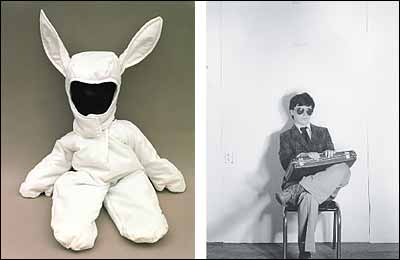
When white kids with no personal experience of black America play up their own skin color much as they’ve embraced black music and humor, and then distance themselves with a dose of irony, a lively cultural moment must be unfolding. Karen Rosenberg spoke with two documenters of this and related phenomena: John Leland, author of the much-praised Hip: The History, and Maurice Berger, who curated ICP’s new “White: Whiteness and Race in Contemporary Art.”
New York: How are “hip” and “whiteness” related?
Leland: The late-model hipsters who are wearing trucker caps, wife-beater tanks—white-trash signifiers—are playing with them, and the people who are wearing them are every shade of skin.
Berger: Hipness is a metaphor of the margins of race. We still live in a culture of segregation—Eminem can meld, but the white and black kids that might respect that melding don’t go to school together. It’s surface.
L.: The virtual world is much more racially fluid. I was once asked to go on The MacNeil/Lehrer NewsHour, and when I got there, everyone was acting a little weird. They’d assumed I was African-American.
What do you make of it when the Wayanses, for instance, dress up as Paris Hilton types?
L.: It’s playing with the stereotype—it’s not exploring it terribly deeply. That scene in 8 Mile, where Eminem and Mekhi Phifer are singing “Sweet Home Alabama”—he’s in Detroit, but he’s in this zone of whiteness. That’s really interesting.
B.: Any time anyone isolates whiteness as a category, it’s unusual. This whole idea of whiteness is so alien to most white people—even very liberal white people.
And the art world is especially white.
B.: Very few white artists venture into black culture—very few white people, for example, read Toni Morrison. To me, it’s hipper to love gospel and Toni Morrison than it is to love Miles Davis.
John Leland, Author
Hip: The History
Ecco; $26.95
Maurice Berger, Curator
“White: Whiteness And Race In
Contemporary Art”
At The International Center Of Photography